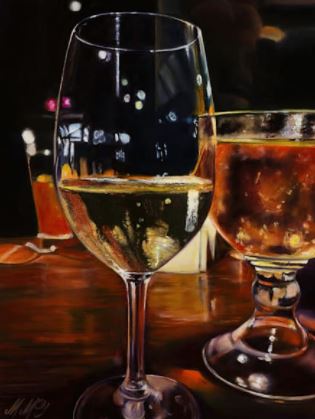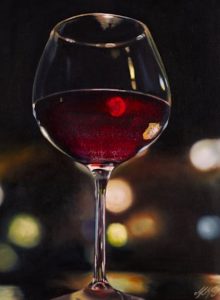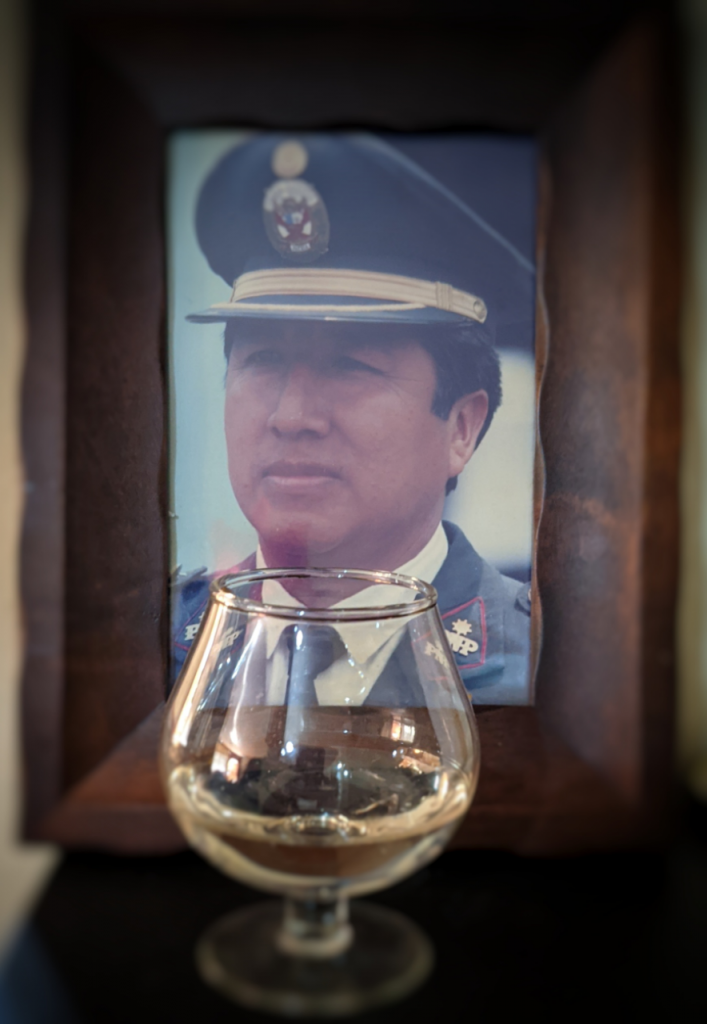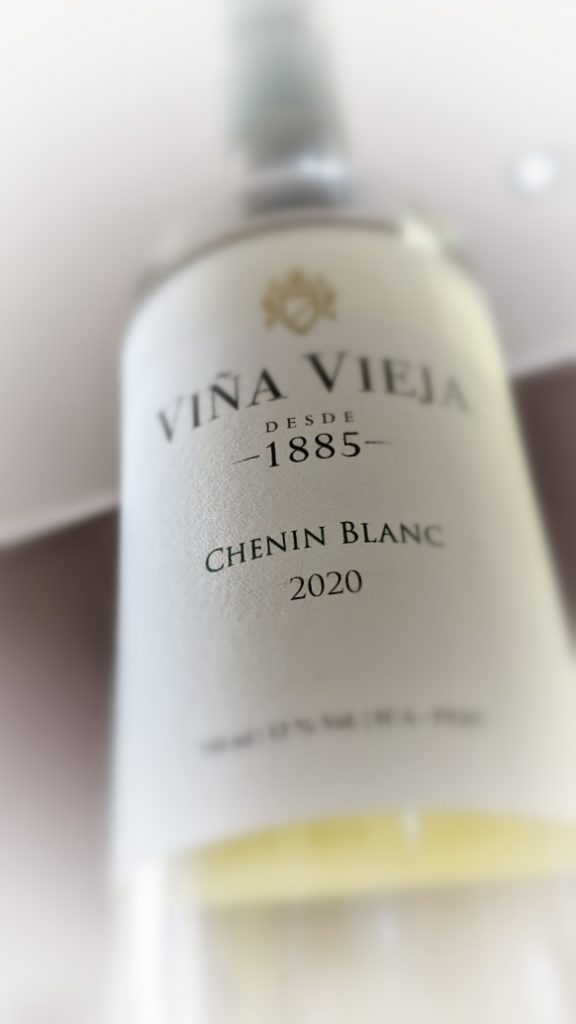
French Wine Reviews Incoming!
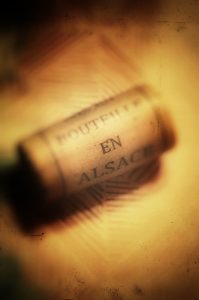 As readers will know, I live in Lima Peru, where it’s flooded with Malbecs from Argentina and all sorts of New World wines from Chile. Having been previously spoiled in the US where I traveled frequently, never far from an upscale wine boutique or, at least, a Total Wine megastore, living in Peru was a shock. Gone were the endless options for wines such as a Tokaji from Hungary or some super-rich Bordeaux.
As readers will know, I live in Lima Peru, where it’s flooded with Malbecs from Argentina and all sorts of New World wines from Chile. Having been previously spoiled in the US where I traveled frequently, never far from an upscale wine boutique or, at least, a Total Wine megastore, living in Peru was a shock. Gone were the endless options for wines such as a Tokaji from Hungary or some super-rich Bordeaux.
Peru is not an advanced wine country by any stretch, as I have written about previously. My neighbors and friends here may be horrified to hear me say it, but Peru is simply ass-backwards in this area of culture. If a wine doesn’t taste like a raisin, they are not up for it.
Now add COVID to the mix, and 2021 was a rough year to be a street-level, gutterpunk wine reviewer. Even though my focus is on affordable wines, for much of the year I had no access to wine at all, given that much of the stuff had been stored in tiendas that were shut down, without air conditioning. The vinegar industry must have loved this season.
Thankfully, as shops and importers began to re-open, I found more and more offering local delivery, allowing me to start up wine reviews again without having to break quarantine or travel restrictions. Panuts offered me a fairly large supply of New World wines (again, mostly from Argentina and Chile, with a smattering from Italy and Spain). And, more recently, I discovered Franco Peru, a Peruvian importer of French wines. (No luck, so far, on any similar operations offering bottles from Germany or California.)
This means we’ll have a brief rush of French wine reviews before the end of the year, and it’s already born fruit (pardon the pun.) An Alsatian Gewurztraminer has already won the first 5-star review of 2021, pushing it ahead of the 4- and 4.5-star reviews from the rest of the year. (It really looked like 2021 might have to award a Winepisser Best Wine award to a wine that had not earned a full five stars.) We should be able to get in a few more reviews before the end of the year, possibly a French Chateauneuf-du-Pape, a Sauternes, and maybe a few authentic Bordeaux — no promises, though, as December 31 is set to arrive quickly.
So 2021 may have been a weak year in total wines reviewed by your Winepisser, but at least we should have a healthy competition among those that made the cut.
No matter who wins, I will be grateful for 2021 as it raised my appreciation for a few grapes I had been otherwise ambivalent about: namely, Albariño and some creative Argentinian red blends.
It certainly looks like a French wine will win this year, but it will be a result of a limited selection, and not wine snobbery. In the meantime, before I resume international travel, I will keep searching for importers who can get me a wider variety of bottles, from a wider geographic region.
Wine Art by Monica Marquez Gatica
I came across the wine art of Monica Marquez Gatica on LinkedIn, of all places, where she posted that she is available for commission work. I then checked out her wine art page — here — and think it would be a great option for restaurant wall art, menus, etc.
For this piece below, Monica says, “the white wine is done in acrylic pouring and the wine glass, and background are done in traditional oils.”
My favorite from her current gallery is this red wine piece:
Monica is originally from Jerez Spain (in the Andalusian country) and resides in Colorado.
I’m intentionally providing low-res images here, and I invite you to visit Monica’s gallery page to see them in higher resolution, and check out purchase options. Monica also offers free consultation regarding her art and commission pieces.
Full disclosure: I have no relationship with Monica, and only caught her art by accident on LinkedIn. I simply think it’s unique to see someone focusing on wine as a subject of painting, and that this might be of interest to the readers here.
COVID Has Forced Me to Re-learn Wine Tasting
The only good thing I can say about the COVID-19 pandemic is that it didn’t kill me (yet, at least.) Other than that, it’s been a shitshow.
But without getting off-topic, what does that mean for a street-level wine thug? It means more suck, that’s what.
You see, any wine reviewer will agree that you have to maintain a steady diet of tasting to stay at the top of your game. Taking a few days off can throw off your palate, and taking a month off is like quitting entirely and having taken up macrame. Now imagine what a pandemic does, when you’re locked inside your house, alcohol sales are restricted, and all this before anyone was able to build up a proper home delivery service?
As I wrote earlier, that’s what happened. In April of 2020 I bunkered myself, knowing full well that I’d be here a while. I figured six months at the most. Here I am, now a year and a half later, still largely bunkered. I’ve not only had to take up macrame, I’ve had to get a YouTube Premium subscription. Things are that desperate.
(Full disclosure: I did not take up macrame, and have no idea what it actually is. I assume it’s something to do with pasta and pillow stuffing.)
A lifetime ago I lived near Orlando Florida, and frequented the many wine shops of the Central Florida region along with fancy restaurants like Berns (in Tampa) or those inside Disney World (yes, some incredible choices there.) Then I moved to Peru, and had to get my bearings all over again. There was a yearlong gap where I was drinking local fare — only to learn that Peruvian wines are generally garbage, and you’re stuck with Malbecs from Argentina or “fauxignon blanc” from Chile — so things went south, just like my relationship with the equator.
But I was still traveling a lot, visiting restaurants and wine bars around the world, while at the same time finding sources for imported wines within Peru that were reasonably reliable. I was even able to hit the annual Walt Disney World Food & Wine Festival to get my EPCOT fix, occasionally. Winepisser was in full stride.
Mind you, I was had largely traded the wine list of Berns for that of Ruth’s Chris Steak House, but — as I said — I’m a street-level wine thug, so that’s fine for me. I’ll sniff around the rim of that $600 glass of Chateau Ramapo Fault if someone else is paying for it, but I’m the Winepisser for a reason.
But I’ll be damned if this year-and-a-half off of regular wine tasting hasn’t thrown off my palate. I can’t be sure if my recent review of El Coto’s Blanco Rioja 2020 — where I swear I tasted Gewurztraminer and SB inside a Spanish rioja — was the product of a complex grape, or a screwed-up brain.
So while all of that sucks, I’m ecstatic that I just received delivery of my first big batch o’ bottles from Peruvian distributor Panuts, and am able to finally fire up my new, bigger, freestanding wine cooler (moar bottlez!) so they don’t turn into vinegar as we head into an oppressive Peruvian summer.
I desperately miss my father-in-law, though, who would share my tastings with me. Nearly every day we would share un par de copas despues del almuerzo and compare notes. Now, when I crack open a new bottle, I place a small glass in front of his picture. Days later, it’s always gone, and I swear I’m not the one making it disappear.
So here’s hoping my palate returns to full strength, and my reviews are reliable. Until then, remember you’re reading the rantings of a wine thug, not Robert Parker.
Winepisser Awards Back On for 2021
Back in July, I announced that Winepisser was back (sort of), but it’s been a hard slog to get things running again. Thanks to Mr. Covid, getting reliable sources of wine without physically visiting places has been tough. I’ve since hooked up to a connection of wine delivery services which should allow me to provide some new reviews.
With that in mind, I’m happy to announce that Winepisser will be back on track with its annual awards for 2021. That means we will only have lost one year thanks to the pandemic — not bad.
A warning, though: the pickings are likely to be slim, and that means far fewer reviews than in prior years. I had been averaging about 150 reviews per year, and 2021 will likely be in the low two digits. I don’t expect we might even find a five-star, and may instead have to grant a Best Wine award to a 4-star this year. So be it!
The Return of the Winepisser (Sort Of)
I’m not sure if I should get a medallion or something, but it’s been over a year since I had my last glass of wine. Today I finally broke that streak, with a glass of my favorite Peruvian offering, the Viña Vieja Chenin Blanc. It’s literally the first wine I’ve tasted with “2020” on the label.
You know why, too. COVID, that’s why.
Living in Peru has been nothing less than a nightmare during the pandemic. Most first-worlders can’t imagine the absolute chaos, terror, and simultaneous ambivalence that residents of Peru have faced.
For me, it’s been personal. My father-in-law died after one moment of weakness, following nearly a year of solid adherence to strict protocols. Prior to his death, he had given up nearly his entire normal way of living — which involved active work with the Policia Nacional del Peru (PNP) and helping retired police officer — for the sheltered life of a hermit living under pandemic conditions. An extrovert and social butterfly, we knew he hated it, but he sacrificed his lifestyle for the overall benefit of his family.
Until one day he didn’t. Invited by his fellow police officials to a brief luncheon in downtown Lima, he gave in to weakness and went to a restaurant. he came back with COVID. Less than two weeks later, this healthy lion of the PNP was thrown into a dusty, tented parking lot and left to die. Whereas he once was an official member of the presidential protective guard, he was now denied all dignity and allowed to suffocate without proper oxygen or medication. The Peru healthcare system had all but collapsed, and stories similar to his were happening by the minute throughout all of Peru.
Worse, he had infected others in our family. His wife, my mother-in-law, contracted COVID, as did members of my immediate family. All survived, with some showing no symptoms at all, while others struggled and barely made it. Meanwhile, we watched as hearses came nearly weekly to cart away some other neighbor.
I was closer to my father-in-law than I was my own father, who I had fallen distant from as soon as I hit 16. With my father-in-law, I felt had recovered a father and while we disagreed at times, we also enjoyed a real adult father-son relationship. He also loved trying the various wines I would bring home, and he was my co-conspirator when cracking open a new bottle.
For my part, I decided in April of 2020 that I would quarantine and stay quarantined until a vaccine emerged. I did just that, leaving the house only four times when absolutely necessary: doctor or dentist appointments. I changed my entire business model to providing remote services only, and developed new methods to conduct all of my work online. I hunkered down and intended to stay that way. I’ve done that ever since.
Peru, meanwhile, fell apart. Oxygen ran out, as did medical supplies. Doctors were found re-using masks and gloves, and medicine was in short supply. The country went through three presidents in two weeks. The spread of COVID was the worst in the world. The people on the street adhered to rules for toque de queda (curfuws) for a month or two, then resuemd their normal lives. They wore masks, yes, but social distancing in an overpopulated city was impossible. And transmission rates skyrocketed. The police enforced cuarantine rules for a few months, and gave up. They simply couldn’t fight against 99% of the country’s population which needed to go back to work.
Peru had the money to pay people to stay home, but like most governments, was so beholden to institutions like the IMF, it opted instead to try to maintain an economic model that was based on pre-pandemic conditions. So everything fell apart, and hundreds of thousands of people died.
Bringing this all back to the subject of wine, there was no way I was going to exit my house and buy wine or attend events to write wine reviews. In the grand scheme of things, survival was more important, and I was literally fighting to survive. Every day I was trying to avoid infection, unsure if my immune system could battle this beast or not. I preferred not to find out.
Meanwhile, wine in the local shops was sitting on shelves in un-airconditioned conditions. Even if I had the inclination to go out and buy, whatever I bought was likely to taste like horse urine. That’s when I decided to temporarily shut down Winepisser, and cancel the 2020 Winepisser awards entirely.
The other day, however, I was finally able to get my first vaccine shot, promising a view to a return to normalcy. Perhaps not tomorrow, but very soon. I still need my second shot, and others in the house still have to get vaccinated before I can return to shopping at wine shops or going to restaurants, but there’s light at the end of the tunnel.
I decided to celebrate with a bottle of Viña Vieja Chenin Blanc because it was readily available, cheap as hell, and infinitely enjoyable. I was also able to grab it at a nearby supermarket where I could dash in — wearing double face-masks and a full face shield — and risk low exposure to COVID.
The Viña Vieja cee-bee has been a routine favorite of mine since arriving in Peru, and has come close to winning a few awards, but — so far — hasn’t made it over the finish line. The fact is that the wine is cheap, it’s a dime-a-dozen, and won’t be served at any sophisticated events. But it’s just plain fun. It goes equally well with a plate of fish as it does with a bit of chocolate. And in the end, isn’t enjoyment what matters?
I’m still not ready to start venturing into places where I can buy expensive bottles. I still dont’ want to go to tastings, and I have cancelled all international travel so I won’t be visiting restaurants while on travel. Soon, though, I’ll start skulking around the wine shops to see what I’ve missed while away. Soon, I will re-launch the Winepisser Awards and begin publishing reviews again.
For now, it’s nice to have survived — to date — and just have a quick glass of chenin blanc to celebrate making it this far.
No Winepisser Awards for 2020 Because 2020
Obviously — obviously — there won’t be any Winepisser awards for 2020. Sigh.
In January, I reviewed one wine, a 2.5 star bottle of junk, and then prepped to review a lot more. By April, I was under national lockdown, and alcohol sales were prohibited. Because of the unprecedented spread of COVID-19 in Peru, I remained indoors the rest of the year, during both mandatory and voluntary lockdowns. I can work remotely, so why risk it?
Meanwhile, the wine available for purchase when restrictions were lifted had been sitting in long-closed shops with no air conditioning. Essentially, much of the wine inventory available for retail purchase is now probably horrible. Interior temperatures of Peru buildings can exceed 100 deg F easily, and shopkeepers long since shut off their electric when COVID hit. There was no way I was even going to order wine for delivery, since it would be throwing out money.
So, no. For 2020 the annual Winepisser Best Wine and Winepisser Worst Wine awards are cancelled.
Let’s hope 2021 gets better.
Longest. Wineless. Quarantine. Ever
It doesn’t take an aerospace expert to notice the last Winepisser blog post was from February. That post announced, without the usual fanfare, the Winepisser 2019 Best Wine award. Since then, this site has been nearly dead.
You can, of course, blame Ol’ Corona. Located in Peru, yours truly is under severe lockdown. Exactly 48 hours after cancelling a trip into the United States, Peru’s president, Martiz Vizcarra, smartly cancelled all flights in and out of the country. He then imposed a series of gradually increasing restrictions and quarantines. Vizcarra knows that Peru’s limited healthcare system won’t handle a full-own disaster well, and that the people here are not likely to fully grasp the dangers of the virus without a firm hand.
to his credit, Vizcarra has handled things well. He’s has made regular appearances alongside (although sitting far apart) health officials and a bright young economist, María Antonieta Alva. His tone is professional, almost fatherly, and not at all like that of the dictator of nearby Venezuela.
Peru’s population welcomed the restrictions for weeks, cheering as police arrested the occasional stray vagrant or obstinate pituco who felt the rules didn’t apply to them. Vizcarra bought valuable weeks, preventing the disease from spreading like wildfire.
Eventually, the people exhausted of it, however. Now, in more recent weeks, the general population has begun to just ignore the rules, going out in droves, ignoring requirements to wear masks, etc. The police do what they can, but the overpopulation is a serious problem, and the sheer imbalance of police vs. people usually means the mobs win out.
But, again, Vizcarra bought time which helped slow the spread of the virus, and likely saved 100,000 lives or more.
One of the restrictions, however, was the prohibition of the sale of alcohol. This was intended to reduce the temptation for neighbors to violate quarantines and curfews, by reducing the reason to have parties. It worked, too. Sure, you can still buy alcohol from local neighborhood shops, but not wine… the stores are rarely air-conditioned, and bottles have sat on steaming hot shelves for years.
So for your honorable Winepisser, this has meant not a single purchase of wine at all, for months. I’m locked down tight, in quarantine, and haven’t left the house in weeks. Under current rules, only one family member is allowed to leave the house per day, and only for essentials (food, medicine, etc.) I’m not the designated shopper.
Which has been fine in every other sense. It’s just been bad for a wine reviewer.
2019 was already a slow year for this blog, with a reduced number of reviews due to various other professional obligations. 2020 looks to be worse, as we head into mid-May without a single review of anything.
Winepisser Best Wine 2019: Klinker Brick Old Vine Zinfandel 2015
The fifth annual Winepisser Best Wine award goes to California’s Klinker Brick Old Vine Zinfandel 2015, a fantastic bottle of crafted from (according to the maker) “16 different vineyard blocks of old vine zinfandel vineyards with an average age of 87 years.” My original report found notes of blackberry, mint, chocolate, smoke and earth, along with a super smooth silky mouthfeel that raised it to top of the class. It’s very, very deep, like an intellectual roundtable of leather-elbowed pipesmokers discussing the economics of post-Stalin Soviet states.
From the Lodi region, this represents the second California-bred Best Wine here at Winepisser. Our inaugural award in 2015 went the blend Apothic Red 2013, a review which hasn’t aged well, but it’s still a tasty wine.
In 2016, the Best Wine award was given to Uruguay’s Narbona Tannat Roble 2010, which still remains my favorite wine since the launch of the Winepisser site.
In 2017, the award was sent to Spain for a surprise dessert wine, the Alvear Pedro Ximénez de Añada 2014.
And last year’s 2018 Best Wine went to France’s Pierre Amadieu Gigondas Romane Machotte 2014.
I’m anxious to grab a case of our latest winner, the Klinker Brick, but it’s hard to get in Peru. (I managed to find it while traveling through the US.) But it’s such a complex wine with so much character, it’s worth pursuing to the ends of the earth.
For more on this wine, the maker’s website is here.
Back to Back Cally Reds Earn A Cinco Each
January and February of 2019 were making the year look poorly, with not a single wine earning the five-star Winepisser rating. Thankfully, the first week in March spiced things up a bit as two single-grape reds won back-to-back cincos.
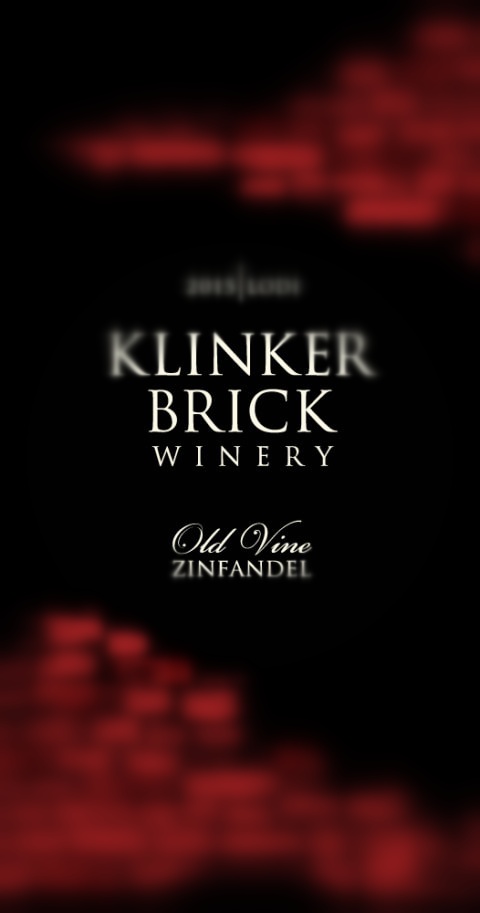
First up is the absolutely wonderful Louis M. Martini California Barbera (2015) from the Helena California winery of Louis M. Martini (natch), which Google Maps tells us is across the street from Sutter Home. The barbera grape is known in Italy, but you’d be hardpressed to find many high-ranked barbies on your wine store’s shelves. This one is worth spotting, since it’s likely to be readily available: I noted blackcurrant and earl grey, while other reviewers said they picked up chocolate, licorice and tobacco. Any of those are great, and this one will please your red-loving friends. The winery’s website is here.
That makes the Martini barbera the first 5-star winner of 2019, but on its heels — tasted just a few days later — is another California red offering, this one a bloody-black zin. The Klinker Brick Old Vine Zinfandel (2015) nabbed another five full stars with its mint notes, which was the cherry on top of this ballsy mix of blackberry, smoke and black earth. This one is not for the timid, as it’s bold bold bold, and you should pair it with a suitably brazen dish, perhaps truffled steak or New Zealand lamb. The KB Old Vine Zin births from Lodi California.
The website for Klinker Brick can be found here.
So we’re finally off to the races, with two amazing five-star reds!
Winepisser Best Wine of 2018: Pierre Amadieu Gigondas Romane Machotte 2014
 The fourth annual Winepisser Best Wine Award goes to the French bottle Pierre Amadieu Gigondas Romane Machotte 2014, a fantastic and nearly oddball red blend from France’s Rhone Valley, in the Gigondas style of majority grenache blending.
The fourth annual Winepisser Best Wine Award goes to the French bottle Pierre Amadieu Gigondas Romane Machotte 2014, a fantastic and nearly oddball red blend from France’s Rhone Valley, in the Gigondas style of majority grenache blending.
I’m a huge fan of chocolate, and mixing it with fruit is always a winner. The Amadieu had just the right hints of chocolate with blueberry that sent me over the moon, putting all my favorite elements together. This is a wine with bold fruit to be sure, but still dry and not at all on the sweet end. With a minty perfume, that added a third great element to the mix.
The Gigondas wines of the region have to include at least 50% grenache to receive the appellation, and this one is mixed with syrah, which I think works very well. I can’t recall a grenache/syrah blend I’ve noticed to any degree before this one, so the Amadieu folks have done good work here.
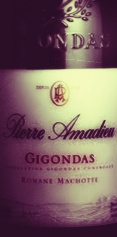 This French wine won out in a difficult year, running against nearly all Chileno competitors. Only five wines reached the coveted “cinco” this year at Winepisser. The very first wine tasted this year, the Errazuriz Estate Series Carmenère 2013, won five stars out of the gate, and Carmenere proved to be a popular offering this year. Also from Chile came the five-star San Pedro 1865 Single Vineyard 2014, another carmy reviewed in June. The third Chileno was a Gewurztraminer-laden white blend, the Carta Vieja Kidia Single Vineyard Reserva Late Harvest. The final competitor came from Chile’s neighbor, Argentina, the 2014 Colomé Torrontés.
This French wine won out in a difficult year, running against nearly all Chileno competitors. Only five wines reached the coveted “cinco” this year at Winepisser. The very first wine tasted this year, the Errazuriz Estate Series Carmenère 2013, won five stars out of the gate, and Carmenere proved to be a popular offering this year. Also from Chile came the five-star San Pedro 1865 Single Vineyard 2014, another carmy reviewed in June. The third Chileno was a Gewurztraminer-laden white blend, the Carta Vieja Kidia Single Vineyard Reserva Late Harvest. The final competitor came from Chile’s neighbor, Argentina, the 2014 Colomé Torrontés.
In the end, the New World lost out to the Old, and France came through. The Carmeneres were delicious but lacked the bright originality of the French blend.
The official Pierre Amadieu website can be found here, and you can buy the Gigondas Romane Machotte 2014 from Wine-Searcher here.
Breaking Down the Numbers
For 2018, a total of 150 wines were tasted in all. By sheer numbers, it was nearly a tie between reds (49%) and whites (51%). The most common tasted white was Sauvignon Blanc, with a whopping 29 essbies tasted this year. I would have bet money that one would have won a cinco, but none reached the top; in fact, the average rating of the SB offerings was only 3.4, although the Maison Nicolas Ferrande Bordeaux Sauvignon Blanc 2015 from France came close to a cinco with a 4.5 star win. Maybe my love of NZ SB is overblown?
Cabs and red blends were reviewed the highest next, with about 15 each, and the beloved rieslings had 12 bottles reviewed. The average reez rating was 3.7, but three bottles hit the 4.5 star mark: Schlink Haus Riesling Spatlese 2013 and Dr. Hermann “H” Riesling 2015 from Germany, and the Maryland-bred Boordy Riesling 2016.
Joining those rieslings at the “so close, but not close enough” 4.5 star rating were the following wines, from all over the planet:
- Cremaschi Furlotti Edicion Limitada de Familia – Spain – 2012
- Caballo Loco Grand Cru Sagrada Familia – Chile – 2014
- Pascual Toso Malbec Alta Barrancas Vineyards – Argentina – 2013
- Vina Cobos Cocodrilo Corte – Argentina – 2015
- Pisano Cisplatino Tannat Merlot – Uruguay – 2015
- Taylor’s 20-Year-Old Tawny Port – Portugal
- Ventisquero Grey (Glacier) Carmenere – Chile – 2014
- Durigutti Familia Red Blend – Argentina – 2016
- Maison Nicolas Ferrande Bordeaux Sauvignon Blanc – France – 2015
- Lapostolle Casa Grand Selection Carmenere – Chile – 2015
- Mollydooker The Boxer Shiraz – Australia – 2016
The Pierre Amadieu Gigondas Romane Machotte 2014 joins three other winners for Winepisser Best wine, this being our fourth year of awards. In our first outing, the controversial California lab-blend Apothic Red 2015 came out on top. For 2016, the cinco went to Uruguay’s astonishing Narbona Tannat Roble 2010. Last year’s winner was a dessert wine from Spain, the Alvear Pedro Ximénez de Añada 2014. Four annual awards, four different countries. Well done, wine world!
As for the other end of the spectrum, find out what wine won (?) the Winepisser Worst Wine 2018 by clicking here.
Quick Cuttings
